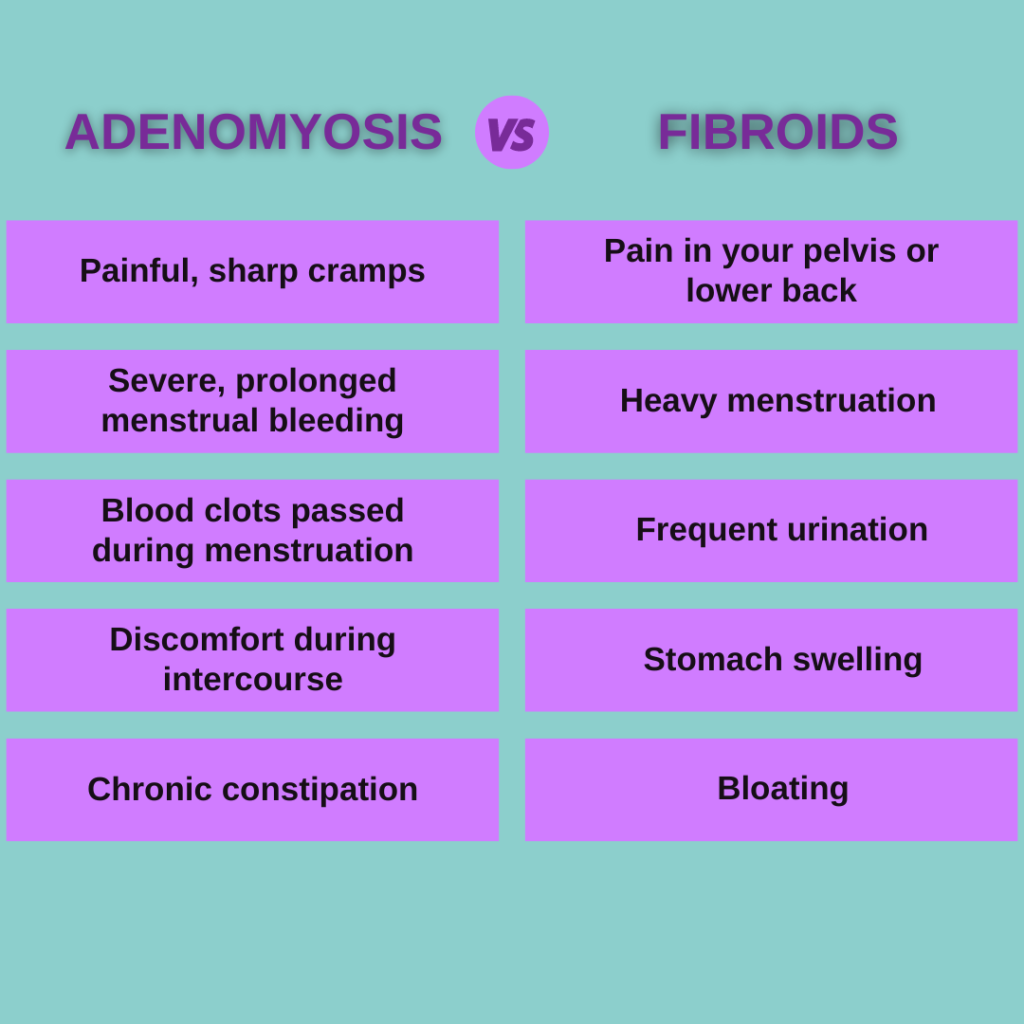
Does UFE Help Adenomyosis?
Yes, Uterine Fibroid Embolization (UFE) can be an effective treatment option for adenomyosis in some cases. Adenomyosis is a condition where the tissue that lines the uterus (endometrium) grows into the muscular wall of the uterus (myometrium), causing symptoms such as heavy menstrual bleeding, pelvic pain, and enlargement of the uterus. While UFE is primarily known as a treatment for uterine fibroids, it can also provide relief for adenomyosis-related symptoms by reducing the blood supply to the affected tissue.
What is Adenomyosis?
Adenomyosis happens when the inner lining of your uterus, also known as endometrial tissue, grows into the muscular wall of your uterus. Even though the tissue has been displaced, it continues thickening, breaking down, and bleeding during your menstrual cycle, causing painful symptoms. Some symptoms associated with adenomyosis are:
- Painful periods
- Heavy bleeding during or between your periods
- Pressure and bloating in your stomach
- Blood clots passed during menstruation
- Discomfort during intercourse
- Chronic constipation
- Frequent urination issues with infertility
- Fatigue caused by anemia
Adenomyosis symptoms overlap with conditions such as uterine fibroids and endometriosis. That is why it’s important to consult a doctor to receive an official diagnosis before seeking treatment for adenomyosis.
How is Adenomyosis Different from Endometriosis?
Although the process of adenomyosis sounds similar to endometriosis, they are completely different conditions.
The main difference between adenomyosis and endometriosis is where the endometrial tissue is displaced.
- With endometriosis, the tissue that should only be in the uterus grows outside and is found in other areas of the body.
- In contrast, adenomyosis grows into the muscular wall of your uterus.
The most common locations for endometriosis are on your ovaries, fallopian tubes, or even organs not located in the pelvic area.
How is Adenomyosis Different from Fibroids?
While both adenomyosis and uterine fibroids can cause similar symptoms, they are distinct conditions with significant differences.

Another condition that typically gets confused with adenomyosis is uterine fibroids, which can share common symptoms. However, the conditions are distinct and have significant differences. Uterine fibroids are benign tumors of fibrous tissue and smooth muscle cells growing in or on the uterus. Although some women don’t experience issues from fibroids, others endure severe symptoms that impact their daily lives.
Fibroids can be treated through minimally invasive procedures such as uterine fibroid embolization (UFE). UFE blocks the blood supply to the fibroids, causing them to shrink and alleviate symptoms. However, if you’re uncertain whether the symptoms you’re experiencing are indicative of fibroids, it’s advisable to use our symptom checker below before scheduling an appointment with a fibroid specialist.
Treatment for Adenomyosis
Some common treatment options doctors advise for adenomyosis are hormone therapy or a hysterectomy. Hormone therapy involves taking birth control pills containing estrogen or using intrauterine devices (IUDs) that release progestin to help control any heavy bleeding associated with your menstrual cycle. However, hormone therapy is not a permanent solution because your symptoms will return once you stop using the hormones.
A permanent treatment for adenomyosis is a hysterectomy. This procedure removes your entire uterus, which prevents any more pain related to tissue growing inside of it. A hysterectomy is a major surgical procedure requiring a hospital stay and a long recovery time. Hysterectomies also prevent pregnancy as the uterus is either partially or fully removed.
Uterine Artery Embolization (UAE) for Adenomyosis
While hysterectomy is a common treatment for adenomyosis – uterine artery embolization (UAE), it offers a less invasive alternative for some women.
UAE is a minimally invasive procedure that blocks blood flow to the uterine arteries. This can shrink both fibroids and adenomyosis tissue. It’s important to note that UAE is a broader term that encompasses various uses.
Earlier studies showed a 55% success rate for UAE in treating adenomyosis within two years. However, more recent research suggests an 85.4% chance of long-term improvement.²
Choosing UAE: What Factors to Consider
If you’re considering UAE for adenomyosis, consult your doctor to see if it’s the right option for you. Factors to consider include:
- Severity of symptoms
- Age and desire for future fertility
- Overall health
- Risks and benefits of the procedure
UAE Procedure: Outpatient and Minimally Invasive
If UAE is suitable for you, it’s typically done on an outpatient basis. You’ll be sedated during the procedure and able to go home the same day. Discuss any concerns with your doctor before undergoing UAE. While UAE and UFE are often thought of as two different procedures, they’re essentially two different names for the same type of surgery. In short, UAE refers to the embolization of any uterine artery, including emergency postpartum or post-operative bleeding. So UFE is essentially a type of UAE.
Uterine Fibroid Embolization (UFE)- A Specific Type of UAE.
Uterine Fibroid Embolization (UFE) is a specific type of UAE used to treat fibroids. Like UAE, UFE involves injecting small particles into the uterine arteries to cut off blood supply to the fibroids, causing them to shrink and die. This procedure is also considered less invasive compared to hysterectomy.
When considering UFE as a treatment option, consult your doctor to determine if it suits your condition. Factors to consider include the severity of symptoms, your overall health, fertility desires, and the risks and benefits associated with the procedure.
If UFE is deemed appropriate for your situation, it is typically performed on an outpatient basis. Sedation is given during the procedure; you return home the same day.
Receive Treatment for Adenomyosis with USA Fibroid Centers
If you want to find a treatment center to relieve your adenomyosis or fibroid symptoms, you can schedule a consultation at USA Fibroid Centers with our online scheduling tool. Most major insurances are accepted, and we offer self-pay options as well.
Our doctors use the latest technologies and tools for treatment. We offer a non-surgical treatment for adenomyosis and uterine fibroids.
For more details about using uterine artery embolization for adenomyosis, call 855-615-2555 to schedule a consultation to discuss your symptoms and treatment options.
Find a Fibroid Clinic Near You
References
- Pelage JP; Jacob D; Fazel A; Namur J; Laurent A; Rymer R; Le Dref O;, “Midterm Results of Uterine Artery Embolization for Symptomatic Adenomyosis: Initial Experience,” Radiology, January 28, 2005, https://pubmed.ncbi.nlm.nih.gov/15681687/.
- Thomas Kröncke, “An Update on Uterine Artery Embolization for Uterine Leiomyomata and Adenomyosis of the Uterus,” The British Journal of Radiology, March 2023, https://www.ncbi.nlm.nih.gov/pmc/articles/PMC9975358/.



